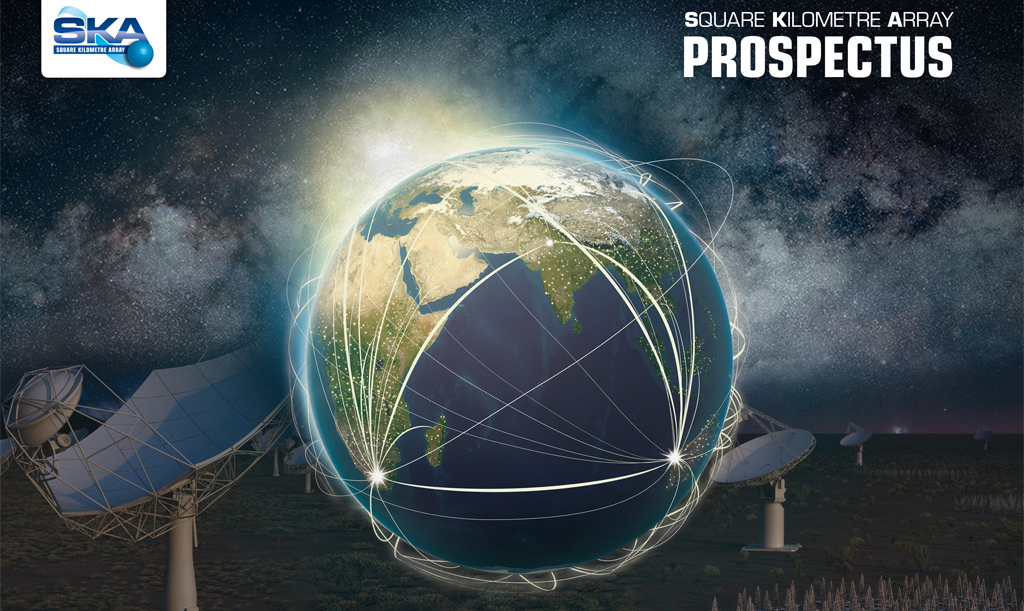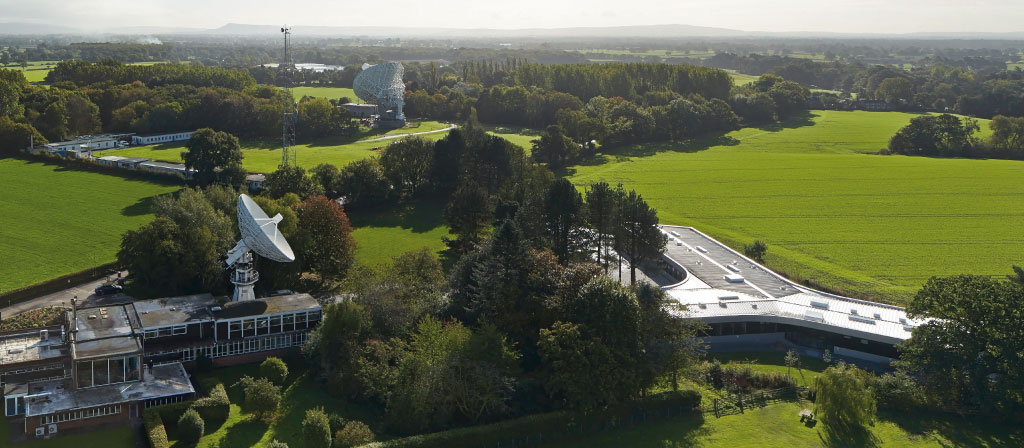
The Square Kilometre Array (SKA) is an ambitious project to build a radio telescope that will revolutionise our understanding of the Universe and the laws of fundamental physics. It will be the world’s largest scienti c instrument, built in two Phases. SKA1 will make highly competitive contributions to addressing fundamental questions in physics and astrophysics, while SKA2 will de ne a new benchmark in these elds.
This Prospectus describes the key features and requirements to begin this process, by constructing SKA1, and the bene ts that will result. It sets them in the context of the longer term aims and ambitions of the full scope of the Project.
It is with great pleasure that, on behalf of the SKA Board, we present the Square Kilometre Array Prospectus.
The SKA will be a next-generation radio telescope; once fully constructed, it will be, by several measures, the largest scienti c facility on Earth. The SKA is being designed by an international consortium of scientists and engineers to tackle some of the fundamental scienti c questions of our time, ranging from the birth of the Universe to the origins of life. How did the Universe evolve to its current form? What is the mysterious nature of Dark Energy? How and when did magnetic elds arise to in uence the Universe as they now do? Was Einstein right about gravity? Can we understand the nature of the gravitational waves on which the Earth surfs? How does one make a planet from pebbles in space? How prevalent are the molecular building blocks of life across the cosmos? Are we alone in the Universe?
To address these questions, an international consortium, currently of 10 nations, is designing and will soon begin construction of the SKA. SKA will form a critical part of the arsenal of new-generation telescopes, both on Earth and in space, which will probe the deep mysteries of the Universe. All such projects require the development of new technologies. The SKA, in particular, is taking advantage of recent developments in digital and communications technologies to collect, distribute and process the truly enormous quantities of data it will receive.
However, that is not all: new developments are required to develop low-power, low-cost, robust systems across the range of technologies needed; new innovations will have to be imagined and created in data analytics to store, process, visualise, mine and exploit the exascale data sets that SKA will generate. All of these developments have the potential to be of bene t to society as a whole, just as the development of WiFi, which came from radio astronomy some years ago, has transformed our lives.

The SKA is entering an exciting and critical period. At the time of writing, the governments of SKA’s partner nations are well-advanced in their negotiations to establish a new governance structure, based on an international convention, for the future SKA Observatory. It is hoped that the SKA Observatory will become a reality in 2018. The project is open to new members from across the globe and we trust that the establishment of the SKA Observatory will see a signi cant growth in membership.
With the new governance structure in place, the project hopes to transition to the construction phase in late 2018 and to complete the rst phase of SKA by 2023. This is truly an exciting time for science.
Prof. Giovanni Bignami
Chair, SKA Board
Chair, SKA Board
Prof. Philip Diamond
SKA Director-General
SKA Director-General
